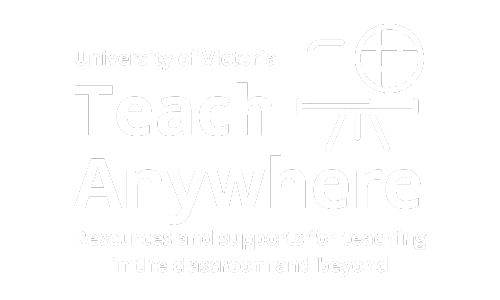ePortfolio Resources for Faculty
Jump to Section
What is an ePortfolio?
An ePortfolio is an online tool that students can use to compile examples of their learning and experiences, reflect on these to deeper understand them, find connections between them and also present them to others. Examples of work, often called artifacts, are stored electronically in a variety of forms, such as videos, downloadable documents, pictures of experiences or work. Like many technological tools, the concept of ePortfolios is consistently evolving and many different terms are used interchangeably with the term ePortfolio, such as digital or electronic portfolio, online dossier, or even simply a personal or professional website.
ePortfolios are very versatile and are used widely for a variety of purposes including:
- to review and reflect on one’s work or learning for academic, personal or professional development
- as a storage place, somewhat like a digital filing cabinet
- to explore one’s personal or professional identity that aids in the development of goals and ambitions
- to showcase one’s knowledge, skills, and/or examples of work or learning in order to share with others (such as instructors, peers, family, friends, and potential employers).
An ePortfolio may contain all or some of the following:
- Connections between experiences over a learning journey
- Files in a variety of formats (text documents, pictures, videos, downloadable PDFs, etc.)
- Writing or projects related to courses, programs of study, etc.
- Evidence of skills or knowledge gained from outside of formal educational courses/programs
- Evidence of extracurricular or co-curricular activities, including examples of leadership
- Evaluations, analysis, and recommendations (such as quotes from instructors or work supervisors)
- Values statement that creates a theme that connects different learnings/skills/hobbies/passions/experiences
Different Types of ePortfolios
There are a variety of types of ePortfolios, all with their own purpose. It is important to note that while an ePortfolio may be developed in one type or format, many times students can find that they can do a variety of small changes in order to transform it for use in another way. Most commonly students often develop a learning ePortfolio for an educational course or program, then later adapt it for use as a showcase portfolio when they are transitioning to career searching.
Showcase ePortfolios
- Designed primarily to demonstrate the highlights of a student’s academic or professional knowledge/skills or experiences
Learning ePortfolios
- Often developed to deepen one’s own learning, or as part of a course or program
- Often shared with peers, instructors and/or supervisors to aid in learning
Assessment ePortfolios
- Often used in clinical programs that allow students to compile and show evidence to demonstrate specific competencies
Learn more about the benefits of ePortfolios from students and faculty in their own words (An article from the Association of American Colleges and Universities).
Resources
While we are providing a number of ePortfolio resources for faculty, we are aware that this is not an exhaustive list and instructors may have specific needs for certain information or supports. Connect with the ePortfolio team to request additional support or resources.
ePortfolio Assessment
ePortfolios offer an opportunity for authentic assessment in work-integrated learning situations...
ePortfolios considerations
Inclusion & access considerations ePortfolios can be a useful tool for teaching diverse...
Sample ePortfolios
Workshops
Student Resources
Contact us
We are here to help you with any questions you have about ePortfolios. Please contact us if you have questions in the following areas:
For ePortfolio research and projects
Rhianna Nagel
Community-Engaged Learning Coordinator
celc1@uvic.ca
250-472-5667
For technological support
Using ePortfolios tool in Brightspace, how to build an ePortfolio using the Online Academic community:
- Email support at: ltsisupport@uvic.ca
- How to build an ePortfolio in the OAC


